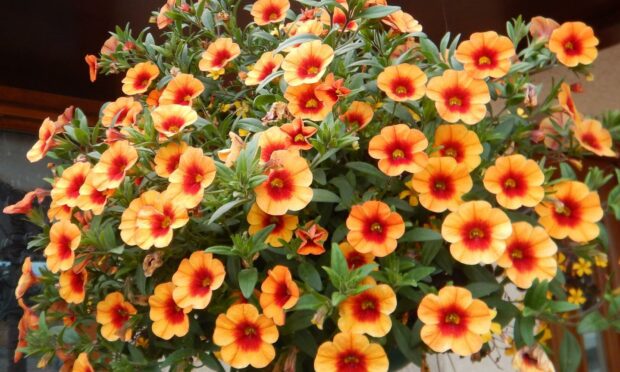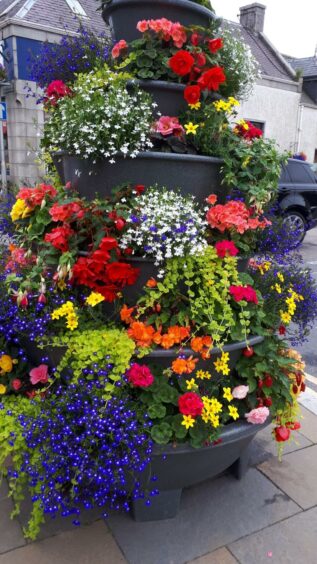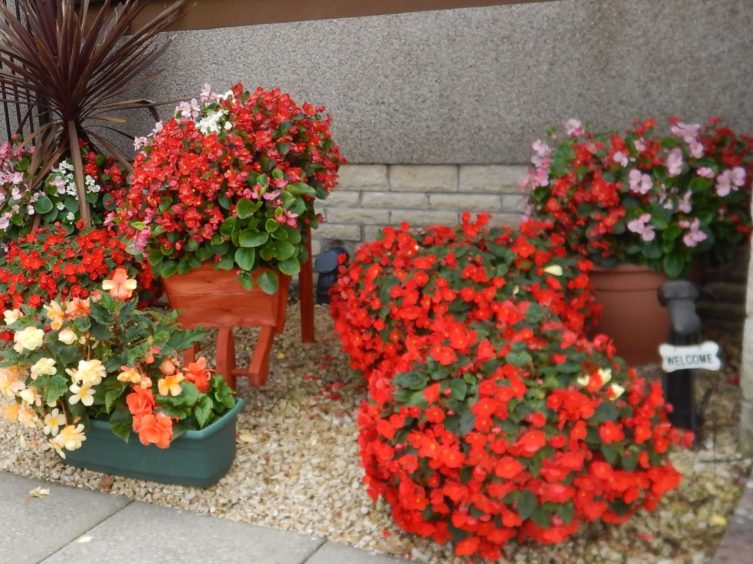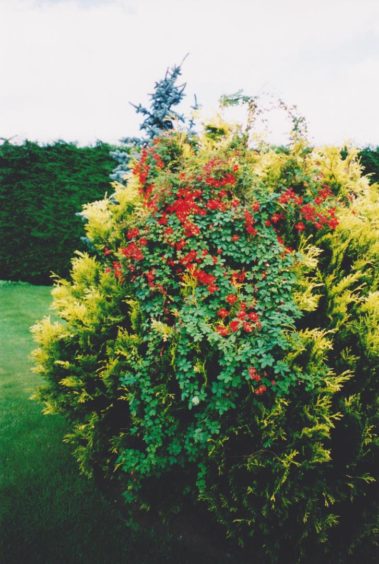“Dead-heading is a bit of a scutter (nuisance),” remarked a neighbour who had actually stopped to ask about feeding tubs and baskets.
“It is anything but,” says I. Timely dead-heading is good husbandry because the removal of dead and dying growths, flowers or damaged shoots and twigs may stop the spread of diseases, but just as importantly, by doing so, some plants will go on to produce a further flush of flowers and/or fine new vegetative growth. It is simply a form of pruning.
On a similar theme, I have been round the garden looking at plant shapes, especially shoots/branches on shrubs where new growth has extended randomly, spoiling the overall shape. Some of the prunings could be used as propagating material, but that’s a story for another day. It is not like trimming a hedge, in the circumstances I am thinking of, it is just individual growths, like that bit of hair on your head that just won’t lie down.
When pruning out individual shoots, take a minute to find a suitable place to make the cut so that it doesn’t show as a bit of bare twig, just an ugly distraction, always cut just above where a side shoot has emerged. As I have doubtless mentioned on previous occasions, as well maintaining an attractive shape, there is more healing capacity around joints.
De-leafing
Staying in the same vein – a quick word on de-leafing. I picked our first tomatoes last week, grown in the usual fashion as single-stem cordons, supported by a twine attached to a horizontal wire fixed to the roof structure. The plants are growing in an unheated west-facing lean-to greenhouse, in growbags for the first time in several years. I had already removed the bottom leaves, up to the one below the first truss. Now that these fruits have started to ripen, I will remove the next leaf or two up to the one below the second truss, and so on.
These leaves are not cut off, that would leave a wound liable to start dying back, affecting the main stem. The leaves will actually snap off cleanly if pushed upwards at the knuckle (leaf joint), leaving a clean wound which will heal naturally and quite quickly.
Why not just leave them on the plant? You could say that they become surplus to requirements, but it also allows for better air circulation during the hotter days of high summer.
Feeding
Next regular job after dead heading, de-leafing, etc, is feeding. Whether it be hanging baskets and tubs outside, or tomatoes in the greenhouse, we expect them to continue to “perform” for weeks to come with a limited amount of soil/compost from which to draw water and sustenance. They need a pick-me-up, at least once more in the case of outdoor plants, but as part of a weekly routine for the tomatoes which we expect to crop until October at least. Where large numbers of plants in tubs and baskets are being tended, specialist fertilisers are available, but frankly for the small demands of most household gardens, any of the commercially available tomato fertilisers will suit all.
Newcomers to this gardening caper will gradually become accustomed to the jargon, and here is a good example For liquid feeding, I look for a balanced NPK concentrate. As you may know, the capitals stand for Nitrogen, Phosphate and Potash. This is not the time or place to explain why Potash gets a K. “Skolars” will know straight away, just take my word for it, otherwise a simple topic will become a language lesson.
So, you look at containers labelled as liquid feed for tomatoes, turn to the instructions and you will find a formula which reads NPK ratio 4:3:8. The relevant fact is – there is twice as much Potash (8) as Nitrogen (4) with just enough phosphate included to provide a balance.
Sticking with layman’s language, at this time of year, the nitrogen is there to encourage continued new growth, but the important one is potash because that is what guarantees quality flowering, and where appropriate, quality fruiting.
DON’T be tempted to double up. Double strength won’t lead to everything doubling up. Stick to the rules. Experts and specialists, such as those who grow to compete in the local flower and veg show, will fiddle around with their own recipes and perhaps feed more frequently, but for most of us, it is best to stick to the instructions on the packaging.
In days of yore when I grew tomatoes commercially, they were fed every day because we had a very accurate automatic hydroponic feeding system installed. To prevent any accidental build-up of chemical, the system was washed through with plain water once every week to 10 days. Not a system for the average 10 x 8 grower!
The Scottish Flame Flower
Every year, about this time, I stop to admire a climber in a local garden which I have known since I first saw it in Ayrshire, way back in the 1950s. Why is it not more popular I ask myself, because it really is a “stoater”.
A relative of the common nasturtium and a native of Chile, with a near unpronounceable name (Tropaeolum speciosum), might be the reason, but how about The Scottish Flame Flower?
Keep your eye open; usually to be found climbing through a conifer, the sheets of scarlet flowers are quite stunning to behold. It can be a wee bit tricky to get established but worth a try!
This plant needs an acid soil, does best when planted in shade (that’s why you often see it climbing through conifers) and prefers cooler summers.
Coming from Chile, you might wonder about its hardiness – nae problem, with roots in a well-protected location it will tolerate temperatures down to -12 deg C.



